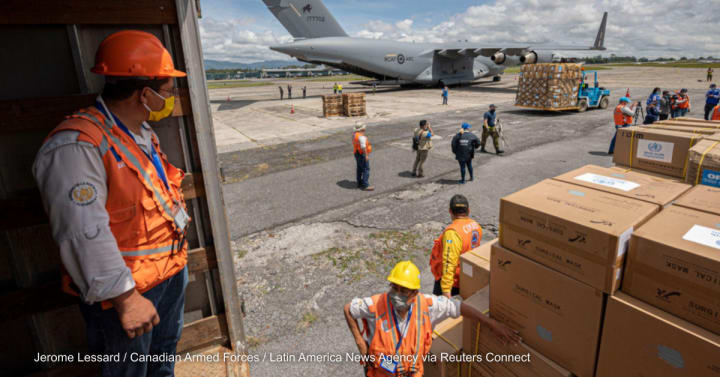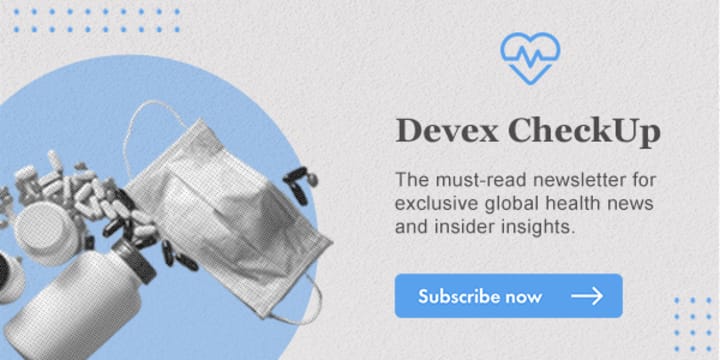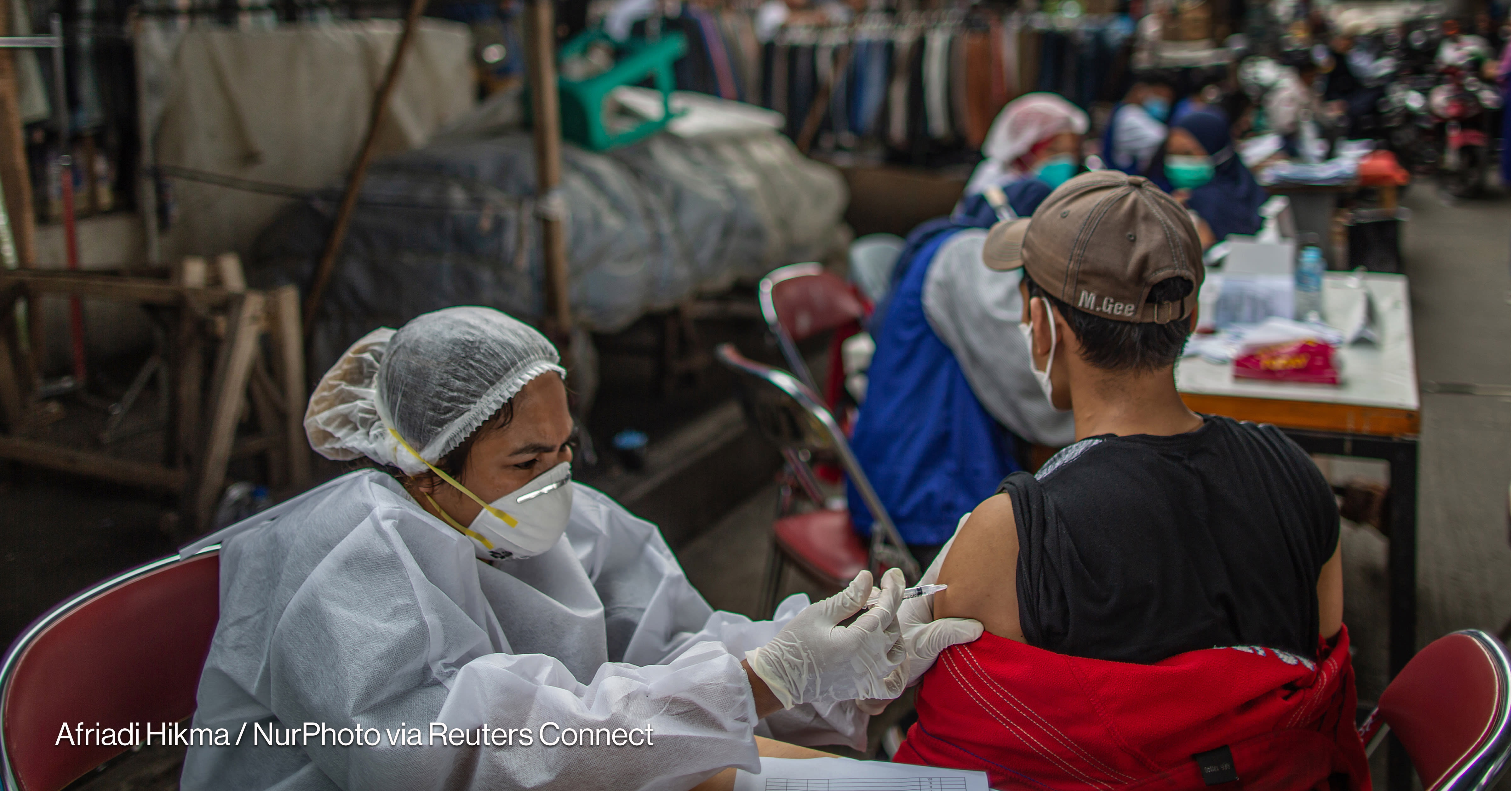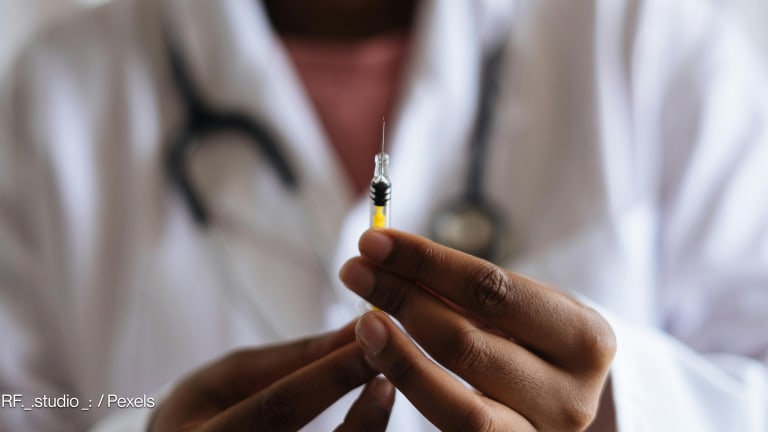
The COVID-19 pandemic has forced world leaders to grapple with long-standing gaps in health systems. From fragmented health services to insufficient financing and an ill-prepared health workforce, the inability to adequately prepare for and respond to outbreaks should serve as an urgent wake-up call. With nearly 6 million lives lost to COVID-19, policymakers and donors must reconceptualize what the future of public health should look like in a world still reeling from the pandemic.
The must-read weekly newsletter for exclusive global health news and insider insights.
COVID-19 disproportionately affected the most vulnerable populations, particularly in communities unable to afford or access lifesaving treatments. Meanwhile, essential health services were severely disrupted; many continue to be shuttered two years later. The pandemic has made clear that future investments must simultaneously address gaps in both universal health coverage and global health security through equitable and resilient health systems.
A well-functioning health system hinges on the ability to deliver essential medicines and supplies to maintain routine services and respond to emergencies. This means guaranteeing affordable prices, supporting an adaptable end-to-end supply chain, and ensuring quality-assured health products. While developing such multisectoral and multistakeholder solutions can be difficult, pooled procurement mechanisms that enable synergistic operations provide an exceptional opportunity to jointly address these challenges.
One example can be found in the Pan American Health Organization, which established the PAHO Strategic Fund, also known as the Regional Revolving Fund for Strategic Public Health Supplies, in 2000 to help member states access essential medicines and supplies.
Since then, the Strategic Fund has supported over 95 million people living with a variety of diseases, from HIV/AIDS and tuberculosis to leishmaniasis and Chagas’ disease to cancer and diabetes. In a world threatened by novel pathogens, as well as a rising burden of chronic illnesses, this ability to mitigate both communicable and noncommunicable diseases is critical to addressing public health crises.
A recently published study outlined five key areas that position the PAHO Strategic Fund as a powerful model for future pooled procurement mechanisms, offering best practices to simultaneously advance both universal health coverage and global health security:
1. Technical cooperation
Pooled procurement mechanisms that are embedded in multilateral organizations are able to leverage long-standing partnerships and cross-sector expertise unique to these institutions.
For example, the PAHO Strategic Fund leads technical consultations with member states based on local stock availability, the facilitation of medical donations, and reviews of alternative treatment protocols — all of which were critical to mount a rapid and integrated COVID-19 response. It achieves this by bridging in-house expertise with specialists based in health ministries, social security and public health institutes, and a diverse set of manufacturers across the Americas region and beyond.
2. Pooled procurement
By leveraging economies of scale and scope, pooled procurement mechanisms excel in the ability to drive down costs associated with procuring and delivering essential medicines and supplies. In addition, regional pooled procurement mechanisms are better positioned to enable the introduction of quality-assured generics, providing significant benefits such as lower prices secured through long-term agreements.
Through these capabilities, the Strategic Fund helped bring down the cost of lifesaving treatments sourced through PAHO, such as antiretrovirals by up to 97% and cardiovascular medicines by up to 99%.
Without collaborative and symbiotic approaches to health care delivery … countries around the world remain at risk to future public health threats.
—3. Capacity building
The pandemic made clear that global health supply chains are fragile; we must not overlook this critical aspect of health care delivery. The Strategic Fund works to strengthen in-country supply chain management, including supporting local staff training on demand forecasting and coordinating with diverse stakeholders to prevent shortages, delays, and wastage.
These interventions paid off during the COVID-19 pandemic, as the Strategic Fund rapidly mobilized to assess regional inventory levels, thus helping to better plan shipments, adapt to alternative and cost-effective modes of transport, negotiate with suppliers to absorb increases in freight costs, and liaise with international finance organizations to shift funding to address supply disruptions for priority programs.
4. Quality assurance
The ability to ensure high-quality medicines and supplies is often overlooked, even though counterfeit or substandard medicines can significantly harm populations and undermine trust in health systems. The Strategic Fund’s diverse product portfolio is continuously updated based on guidance from national regulatory authorities and so-called stringent regulatory authorities, as well as changes to the World Health Organization’s lists of essential medicines and prequalified products.
During its COVID-19 response, the Strategic Fund facilitated robust quality reviews for emerging needs, such as intensive care medicines related to the coronavirus. In addition, it ensured alignment with evolving international standards to optimize the safety and efficacy of products across all priority health programs.
5. Innovative financing
COVID-19 posed major threats to both health and the economy. So, countries already struggling to pay for primary health care services were often forced to curtail these to finance a looming pandemic response.
The Strategic Fund is unique among pooled procurement mechanisms in offering interest-free loans to help member states acquire essential medicines and supplies. By placing a nominal percentage of every product purchased into a capitalization account, it provides a flexible option for countries to maintain their commitments to routine and emergency health services.
In 2020, the Strategic Fund’s capitalization account had a cumulative utilization rate of over 150%, indicating that funds were actively repurposed to provide short-term financial support. Furthermore, it facilitated bilateral and multilateral lending schemes. Such solidarity-based mechanisms are instrumental in helping countries manage the economic stressors posed by health crises.
Looking ahead
Health systems have been overwhelmed by COVID-19, unable to simultaneously respond to emergencies while protecting routine services. Public health leaders can learn from the example of the PAHO Strategic Fund, investing in multicountry pooled procurement mechanisms that can integrate technical expertise across both communicable and noncommunicable diseases, support supply chain strengthening and innovative financing, and significantly lower the cost of lifesaving health products.
As in-country delivery gaps and supply chain disruptions take center stage, multilateral pooled procurement mechanisms have an urgent and unique role in supporting the COVID-19 response while maintaining essential health services. In particular, these should be included in high-profile pandemic preparedness and response proposals currently being debated, such as the global “pandemic treaty,” International Health Regulations reform, and the Global Health Threats Fund, among others.
Without collaborative and symbiotic approaches to health care delivery that advance both universal health coverage and global health security, countries around the world remain at risk to future public health threats. It’s a risk we cannot afford to take again.










